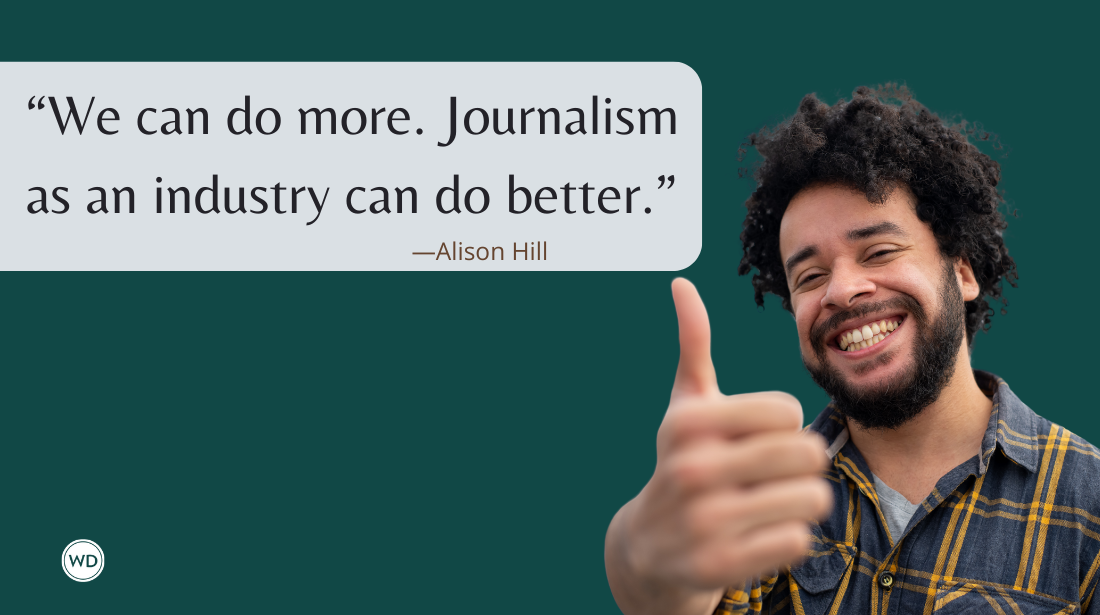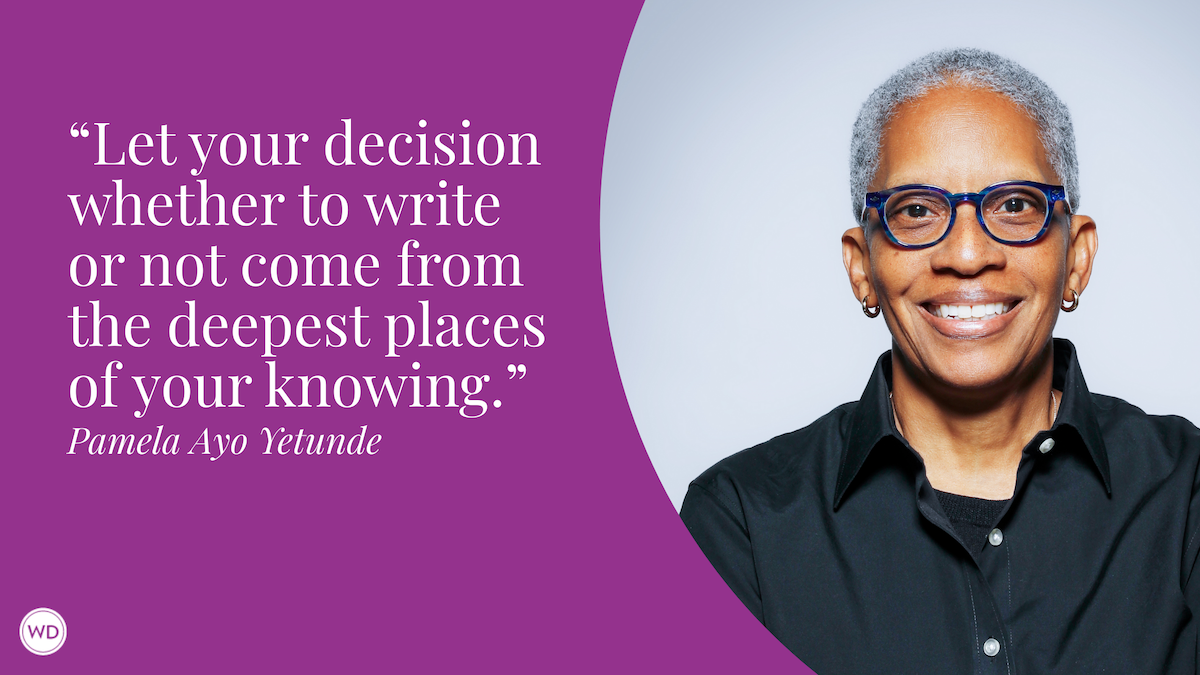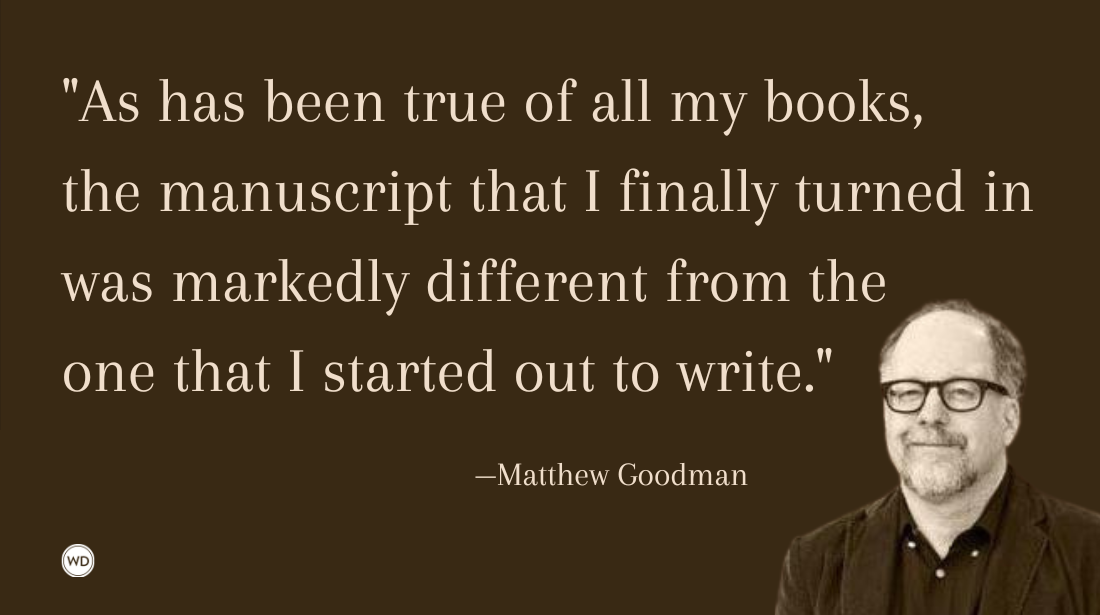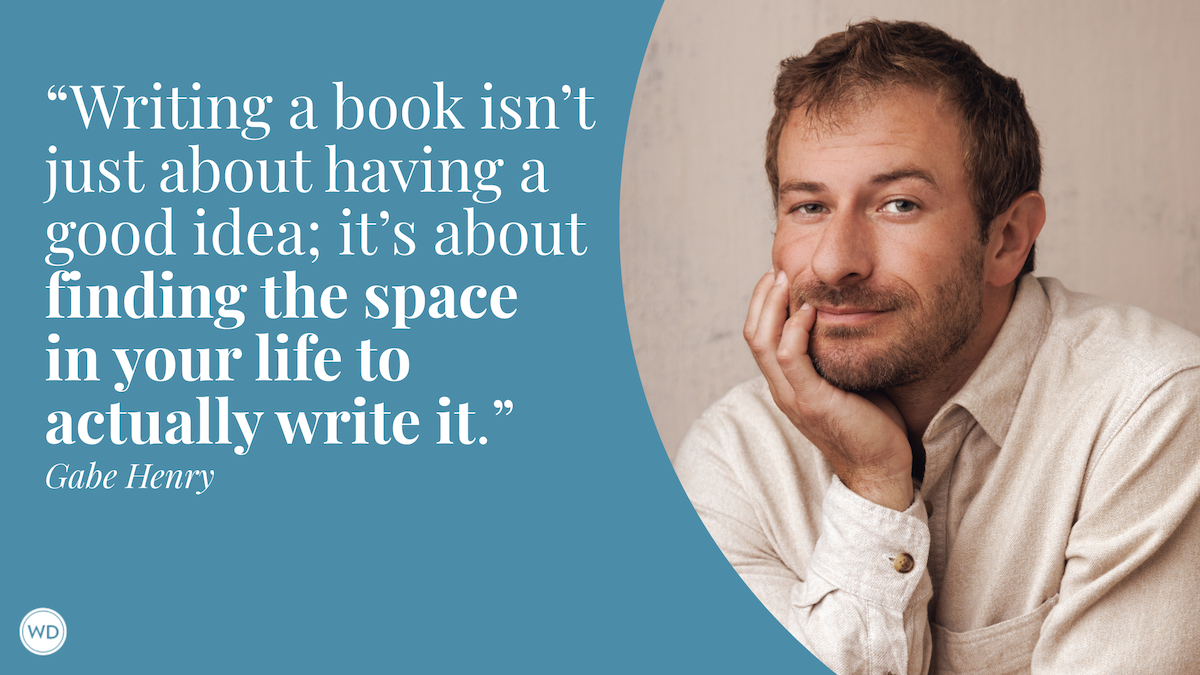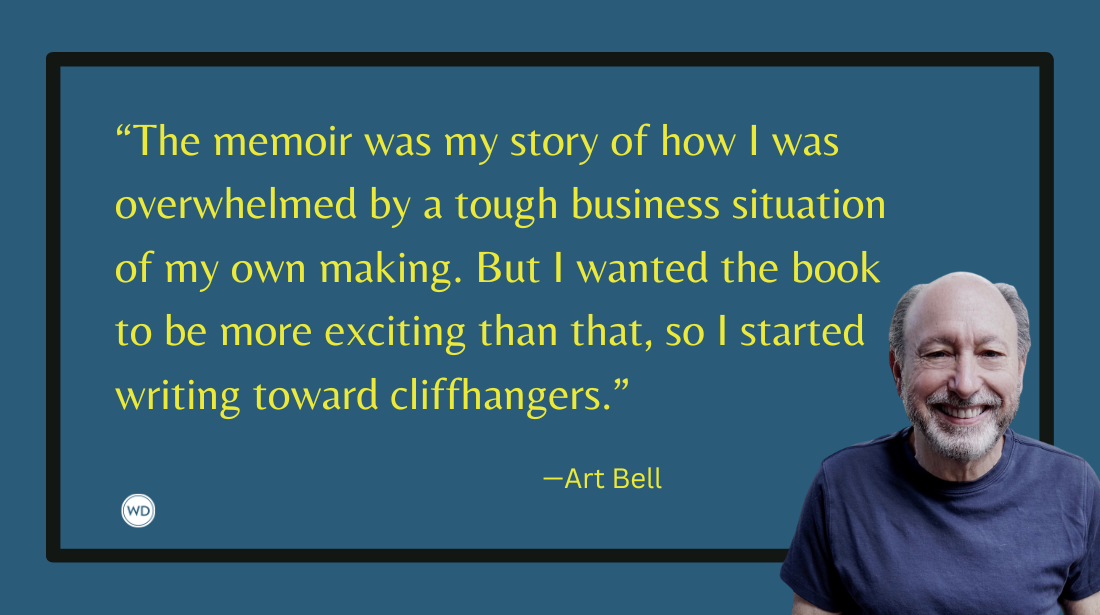How to Write a Compelling Memoir (and Stay Sane in the Process)
In this post, Tanja Pajevic shares how to write a compelling memoir and stay sane in the process. In this post, she describes nine tips, including clarifying your scope, how to correct course as you go, and more.
In this post, Tanja Pajevic shares how to write a compelling memoir and stay sane in the process. In this post, she describes nine tips, including clarifying your scope, how to correct course as you go, and more.
Writing a memoir isn't for the faint of heart. As you're learning the craft and technique of memoir, you're also reckoning with your life. And oftentimes, the place you end up isn't where you began. Despite that, writing your memoir can be an incredibly rewarding journey—one that allows you to move into a deeper sense of self.
If you love to write and have a story you want to tell, the only thing that can stand between you and the success you're seeking isn't craft, or a good agent, or enough Facebook friends and Twitter followers, but fear. Fear that you aren't good enough, or fear the market is too crowded, or fear no one wants to hear from you. Fortunately, you can't write while being in the flow and be afraid simultaneously. The question is whether you will write fearlessly.
How to Write a Compelling Memoir
Here are 9 ways to navigate the journey more easily, while staying sane in the process.
Tip #1: Clarify Your Scope
Compelling memoirs cover a particular time frame, theme, or transformative event. They don't cover your entire life story—that's autobiography. That's why you'll want to figure out the scope of your story before you start writing. Otherwise, it's too easy to go down the rabbit hole. This seems like a relatively easy concept until you sit down to write. Because let's face it: when we're writing about our lives, there's a lot to explore. And if you're a writer, much of it is meaningful and symbolic.
But a compelling memoir must be shaped. And if you wait until you're 20, 50, or 100 pages into your story, it's a lot harder to see the forest for the trees. You must choose. What you leave out is just as important as what you keep in.
Start by clarifying the scope of your story. What is the challenge or transformative event you're writing about? What is its nugget of wisdom? For example, I wrote The Secret Life of Grief: A Memoir after my mother's death because I wanted to explore how to grieve consciously in a society that barely recognizes grief. This was my main theme.
Once you have your main theme, your next step is to shape your narrative arc. As you know, stories have an arc, or a shape, to them. Something needs to be figured out, discovered or transformed. This central question provides the story's tension or conflict—the key to keeping your reader interested and turning the pages.
So let's apply this idea to your story. What is it you were trying to figure out during this time in your life? What did you want, and what was keeping you from getting it? Once you have the answers to those questions, jot down a list of 5-8 specific scenes (or stories) that exemplify your main theme as well as your transformation.
Tip #2: Start with the Big Rocks
Have you heard of the Stephen Covey's popular "rock, pebbles, and sand" metaphor for time management?
Here's how it works: If you don't start with the most important projects in your day (the big rocks: work, family, health), something small (pebbles or sand: email, side projects, etc.) will take up that time or space. Therefore, you gotta start with the big rocks.
I find this analogy works incredibly well when you're writing your story. The big rocks in your memoir are the key scenes that support your transformation. It's the list you just jotted down.
Why do we start with these "big rocks?" Because if you start with the pebbles (the stories that are interesting, but not pivotal to the story), it's easy to go off on a tangent. You can spend months (or even years) here.
I see this happen to too many folks when they start writing. It's also a problem for those who like to work with writing prompts, especially while writing memoir. Although writing prompts can help you get writing, they can take you down tangential roads, putting your time, energy, and effort into writing scenes or snippets that don't belong in this particular story.
Start with the big rocks, and it'll save you plenty of time and frustration—I promise.
Tip #3: Know Which Part of the Writing Process You're In
Have you ever sat down to write a specific scene before finding yourself tangled up in one yucky paragraph, unable to make it shine (and then unable to move forward)? Skipping steps and trying to do everything at once are the quickest paths to overwhelm. Try breaking the writing process into distinct stages instead.
Start by getting the bad first draft version of the story down on the page. In this part of the writing process, the goal is simply to get the big rocks down on the page. That's it. Your draft isn't supposed to be pretty at this point—that comes later.
Once you've gotten the big rocks down on the page (essentially building a scaffolding for your story), go back and start filling out your characters, adding telling details, etc. From there, you can shape your conflict, fill out pivotal scenes, and expand and contract dialogue. With time and consistent effort, this usually results in a solid first draft.
Once you have that solid draft, I recommend a big picture edit (also called developmental or comprehensive editing), so that you can see what's working well in the manuscript as well as what needs to be strengthened. You can do this yourself or hire an editor. Developmental edits typically address story structure, pacing, character development, conflict, setting, dialogue, tone, narrative style and organization. Investing in a good developmental editor at this point can save you lots of frustration down the road.
Note: Some writers bypass this step, mistakenly hiring a copy editor instead. However, hiring a copy editor and doing line editing should be one your final steps. That's the stage where you'll want to shine every last word, prettying everything up for the masses.
Back to my point: Knowing which part of the writing process you're in will a) make the process more manageable and b) keep you moving forward.
When you're in the yucky first draft stage, it's easy to get distracted, thinking you need to write more or make that first draft shine. But you can spend weeks or months prettying up a scene that might not even make it into the final book. Instead, keep moving forward, since momentum is what will get you to the finish line (more on this one in a sec).
Tip #4: Create a Writing Schedule You Can Stick To
We tend to underestimate the amount of time it'll take us to write a book, while overestimating how much time we can devote to the process. If you haven't written a book before, it can be hard to wrap your mind around the stamina it'll take. So we jump into the deep end, thinking we'll write three hours a day, underestimating whether or not we can sustain this over the long run.
Ack! I get it. Of course, I can write for two hours a day, I think. After a good week or two of hitting my writing goal, life steps in (a kid's home sick, my client work kicks up, somebody needs something), and I realize I'm working with unrealistic expectations.
That's why it's so important to create a writing schedule you can stick to, one that makes sense with everything you have going on in your life (work, family, friends, community, obligations, etc.). Writing a book is a marathon, not a sprint—and building a sustainable writing habit is what will get you to the finish line. The last thing I want is for you to spin out and rebel, which tends to happen when we're overbooked and overscheduled. (Been there, done that.) Much better to keep going instead.
This is why I council folks to realistically assess how much time they can set aside to write. Is it an hour a day five times a week? Great. Thirty minutes four times a week? Awesome. Schedule it in and stick to your schedule. If you don't prioritize it, it won't happen. Which leads me to my next point:
Tip #5: Create Momentum
It's important that you create a consistent writing schedule if you want to finish your book. When you're not writing consistently, it's easy to find yourself facing writer's block and/or losing the thread of your story. If you've ever worked on a big project before, you already know what a production stopping/starting/restarting can be. That's why it's so important to keep the momentum going. On the days you don't have time to write, find a way to stay connected to your project.
Remember: small steps each day are what will get you to the finish line. Think tortoise, not hare.
Tip #6: Ritualize Your Writing Process
Safety and self-care are critical while writing memoir. When we're writing about challenging topics, it's important to create a safe container to help hold the story. Creating a writing ritual is the first step.
A writing ritual doesn't have to be fancy to work; it simply has to be consistent. Your goal is to condition your mind and body to put the rest of your life on hold while you write. You can do that any number of ways, from sitting down with a cup of coffee to lighting a candle or taking a few deep breaths as you settle into your seat.
If you're writing about a traumatic event, self-care is essential, since the simple act of sitting down to write can reactivate the fight-or-flight trigger. If that's the case for you, take a few minutes to slow down and look around the room. Scan your surroundings. Is anyone or anything out to get you? Probably not. So give yourself a hug, since this activates the parasympathetic nervous system, bringing you out of fight-or-flight. (Sounds silly, I know, but it works. Try it.)
Once you've finished your writing session (whether you've written for five minutes or two hours), create a stopping ritual. Start by celebrating your success, even if you've only written for five minutes. Why? Because this is how you start to build a writing habit, strengthening the neural pathways that will sustain you over the long run.
From there, visualize yourself placing your story into a file cabinet, safe, or lockbox for safekeeping until your next scheduled writing session. Then, tell your story when you'll be back to work on it. If the story pops back up again, gently put it away again. This might take a bit of practice, but if you keep at it, your story will soon stay there.
Containing your story will help keep it from hijacking the rest of your life—imperative if you're working with sticky emotions. For this trick to work, though, you have to come back to your story when you said you would. Part of what you're doing with this exercise is building trust with yourself as well as with your story. Both of which will help you reach the finish line while staying sane in the process.
Tip #7: Recognize that Your Story Will Grow and Change
In all likelihood, the memoir you end up with will be different from the one you started with. Over the years, I've found that early drafts are often for the writer. After all, we write what we need to know. Part of the memoir-writing process is culling that initial material and shifting the focus to the reader.
There's a big difference between writing a book for ourselves to writing one for your reader, and we can't always see foresee that distinction when we begin. Knowing this going in can help keep expectations in check. It might even allow for some compassion throughout the process.
At its heart, memoir is a process of discovery—for the writer as well as the reader. And here's the thing: Just as your story grows and changes, so will you. The process of writing your memoir may very well expand the constraints of what you thought was possible for yourself. I've seen this with my clients, as well as experienced it myself. Whether or not you end up publishing your memoir, the very act of writing your memoir allows you to move into a deeper, more authentic sense of self.
And that's pretty friggin cool.
Tip #8: Course-Correct As You Go
Remember what I just said about the story growing and changing on you? Well that's why it's important to jump in and get started. Because you can't course-correct until you have something to work with.
Despite that, I've found that some folks don't want to start writing until they have the story all figured out. But that's not how memoir works. Writing memoir can be a bit like shooting at a moving target. You think you understand what the story's about—until you get deeper in. Then you began to see all sorts of nuances and revelations that weren't available to you when you started writing.
That's why it's important to jump into the deep end, and see what you've got. Identify your big rocks and start writing. Don't fall into the perfectionism trap, and don't worry about making the "right" decision. Because there is no "right" decision, especially when it comes to memoir. Go back to your main theme and transformation and start there. Break it into chunks and take it one step at a time.
And then, when your best-laid plans go awry, course-correct. Course-correct your writing schedule, your big rocks, your theme, whatever else needs correcting. This, truly, is your Get Out of Jail Free card.
Finally, remember to let the story grow with you. If you don't, it's easy to fall into the trap of struggling with the same book for 10, 20, 30 years. We all know someone who's gotten stuck there. So what happened?
Well, when she started writing, her book was about X, so that's where she put her stake in the ground. But as the years passed, she kept growing and changing, as did her book. She kept writing, never quite realizing that the ground beneath her was shifting. Meanwhile, she's stuck trying to force a square peg into a circle.
Which leads me to my last tip:
Tip #9: Done is Better than Perfect
Gasp! I can already hear your response to this one, especially for those of you literary folk. But doesn't my book have to be as close to perfect as it possibly can be?
Well, maybe and maybe not.
I want you to have a strong book, absolutely. But I'm not sure you need to spend the next 10-20 years writing it. Nor do I want to encourage you to spend your life writing an opus that will never see the light of day. You've got a lot of wisdom to share. We know that; otherwise you wouldn't be here. And what good can your story possibly do if it's trapped on your computer? Get it out into the world instead, where it can work its magic.
Because here’s the truth: At the end of the day, there's no such thing as a perfect book. Just like there's no such thing as a perfect person. But an imperfect book can still change lives.
Tanja Pajevic is a memoir and nonfiction book coach and the author of The Secret Life of Grief: A Memoir (winner of the Nautilus silver award in memoir). She leads the online course Memoir Mastery: How to Write a Compelling Memoir. Connect with her and download her Story Starter Kit here.
About Tanja Pajevic
Tanja Pajevic is a writing coach and the author of The Secret Life of Grief: A Memoir (winner of the Nautilus silver award in memoir). Connect with her and download her Story Starter Kit here: https://tanjapajevic.com/storystarterkit/



